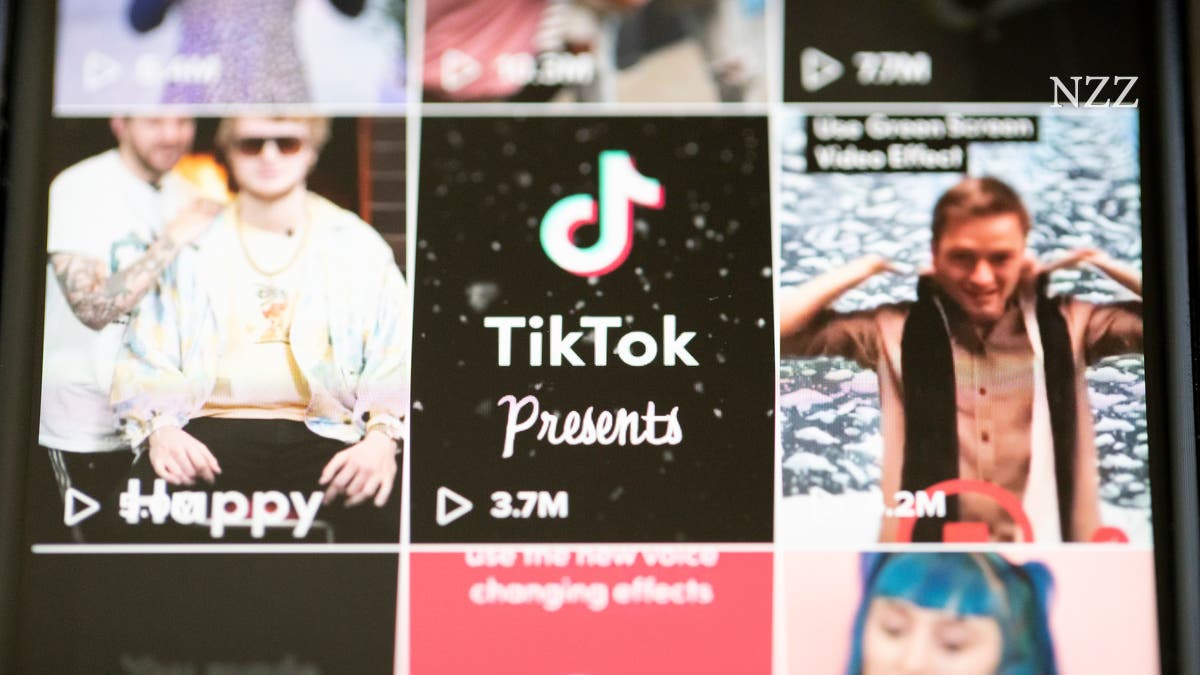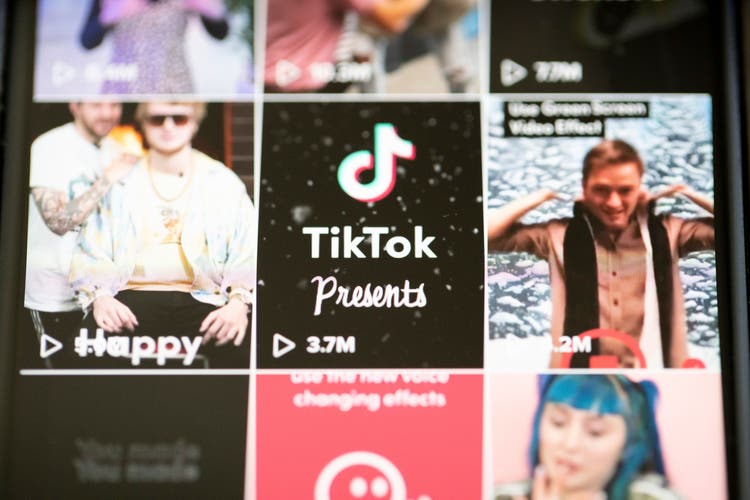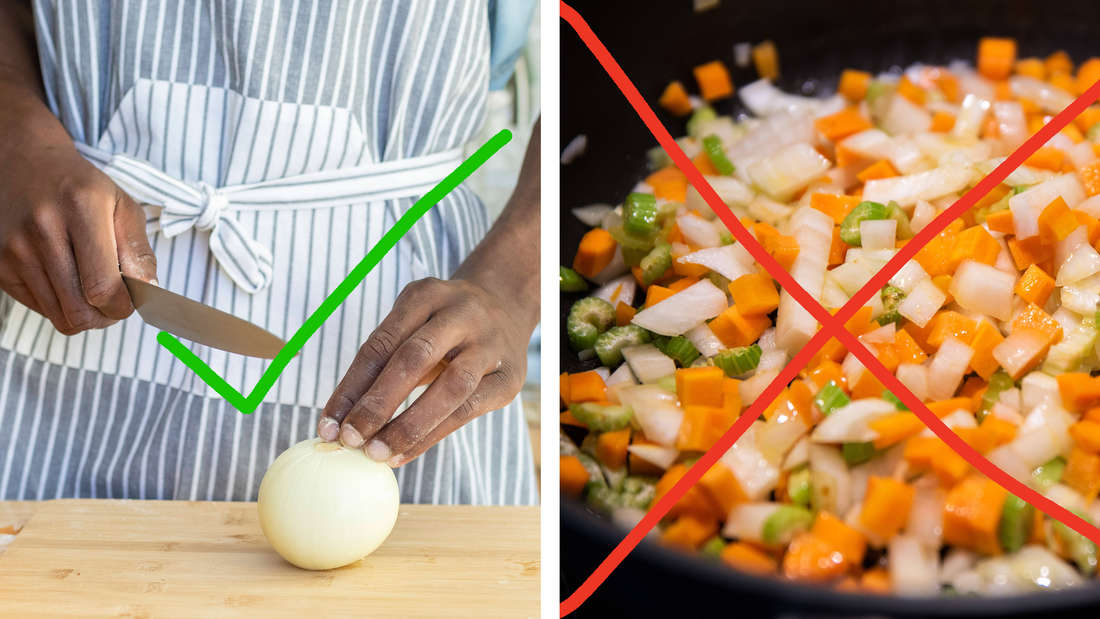
a threat to democracy?
More and more people are consciously avoiding consuming news. At the same time, social networks are shutting down news programming. This has consequences for democracy

Entertaining cabinet of curiosities in the thumb mouse cinema: Tiktok's offering now reaches a billion users around the world.
Gaëtan Bally / Keystone
There are more and more people who don't like news in the world. This is one of the central findings of the latest “Digital News Report” from the Reuters Institute. According to the study, which is based on a representative survey of 93,000 news consumers in 46 countries, 38 percent of those surveyed sometimes or often avoid news – actively. In 2017 the value was 29 percent. In Brazil, the proportion doubled from 27 percent to 54 percent between 2017 and 2022. 43 percent of all respondents said there were too many reports about Covid-19 and politics in the news, 36 percent said news had a negative impact on their mood.
This so-called “news avoidance”, i.e. the conscious avoidance of news, is a fairly new phenomenon, although the causes cannot only be traced back to the monothematic reporting on Covid-19 or the Ukraine war. As early as 2018, long before Corona dominated the headlines, a representative survey by the Pew Research Center showed that more than two thirds of all Americans were exhausted by the news.
problem for the democratic public
This seemingly pathological news fatigue is surprising given that news, especially local news, has become a scarce commodity in the USA: According to a study by the Medill School of Journalism at Northwestern University, 70 million Americans now live in so-called “news deserts”. , i.e. areas where there is no longer a local newspaper.
One should not draw the wrong conclusion that “news fatigue” or “news avoidance” are to blame for the death of newspapers – the cause is rather the absorption of the advertising market by Facebook and Google. Still, fatigue is a problem for publishers whose core business is selling news. But not just for them: avoiding news is also a problem for the democratic public because being informed is a basic requirement for deliberative processes. If more and more people turn away from public discourse because the images of corpses in Ukraine or starving people in Africa seem unreasonable to them, democracy risks becoming an elitist event.
It has always been the enlightening promise of the Internet to use electronic data transmission to level power hierarchies and make knowledge available to everyone. And this promise has partly materialized: anyone with an internet connection can receive news from all over the world. Never in history has access to information been so low. Nevertheless, more and more people are closing themselves off from news. How could it come to this?
“Friends and family first!”
The politics professor Markus Prior wrote in his book “Post-Broadcast Democracy” in 2007 that political information was originally the “byproduct of inefficient media environments”. When television still had three channels, you had little choice, and until the feature film started, the viewer had to watch the news, so he learned something about politics at the same time. Opting out was more costly than opting in. You watched the news because you didn't want to switch off. With the increase in channels and choices through the spread of cable television and later the Internet, political learning effects diminished.
The presidential debate between Richard Nixon and John F. Kennedy in 1960 was played in 60 percent of American households. During the 2004 debate between George W. Bush and John Kerry, only one in three households had their televisions turned on. With the increasing variety of programs, Prior analyzes, the inequality between the interested and the less interested part of the public has grown: the “news junkies” watch and read even more news, while the series and entertainment junkies consume significantly less news – too , because the costs of opting out have fallen.
Today you can easily switch between a news broadcast or swipe away messages on your smartphone – if that's even necessary. Because in the digital world, active avoidance strategies are needed less and less to keep news away from you. Since the fake news flood during the 2016 American presidential election campaign, Facebook has continuously reduced the news content of its “news feed”. Where there is less news, there is also less fake news. In 2016, the then Facebook deputy boss and current Instagram boss Adam Mosseri announced a change to the news feed algorithm with the words “friends and family first”. After that, traffic to some news sites plummeted.
Vladimir Putin also appears briefly – with a high five
In Facebook's logic, news is primarily news from the user's immediate environment – the neighbor's missing cat, the cousin's baby, the holiday pictures of an acquaintance. According to Facebook's transparency report, news now only accounts for 0.4 percent of all views.
The video app Tiktok, which now has a billion users in the world, is also a largely news-free zone (although, according to the “Digital News Report”, paradoxically, more and more people are using it as a news source): the user swipes through an entertaining Cabinet of curiosities of dances, mischievous pranks and cooking tips. It's amazing how quickly you get sucked into the vortex of a digital flip book – and get lost in a burlesque infomercial. You can spend whole hours in front of the Mouse Cinema without being even remotely confronted with news or politics.
And when the algorithm does make a tentative attempt to introduce something political, it is usually ironic bits of information taken out of context that are intended to further increase the “engagement” of clicks and likes. For example, the scene in which Vladimir Putin high fives Saudi Crown Prince Mohammed bin Salman at the G-20 summit.
Kitchen, garden, bathroom
Tiktok is the contrast to Ennui and the seriousness of everyday life, where you see the same dark (symbolic) images over and over again. The videos are cheerful, entertaining, frivolous, and sometimes tasteless. The fact that many of the clips that go viral are set in private environments – kitchen, bathroom, garden – points to the escapism and Biedermeier nature of the digital community, which is becoming increasingly comfortable in its filter bubbles. Tiktok is also so successful because it draws a curtain over the real horror cinema of war and climate catastrophe and entertains the audience with serial comedy entertainment.
With the triumph of Tiktok, Instagram and Co., a privatization and depoliticization of the public is taking place: the public space (or what is left of it in the digital world) is colonized, even littered, by private trivialities and banalities. With the result that the public cause is pushed back. Political information is no longer a byproduct – like the news before or after a feature film – but at best the waste product of information recycling driven by algorithms.
This also changes the frame of reference of the messaging system: in the entertainment cosmos of Tiktok, a message has to assert itself against twerking students and fouling district league players in order to be received at all. Not an easy undertaking, especially since no one really knows how the black box algorithm works. This is good news for those who don't like the news. For everyone else, less.

Russell age 28 years Studying in world cooking I have a degree in England
Studying in world cooking I have a degree in England

